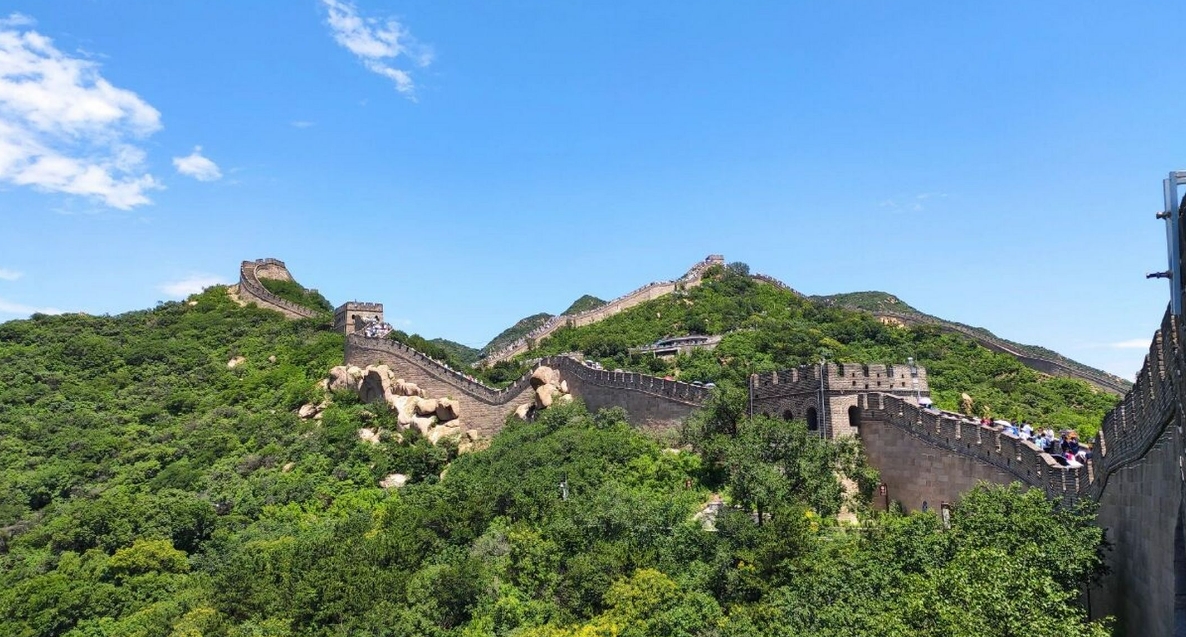
The Ming Great Wall: A Monument Built Across Centuries
The Great Wall of China, an iconic emblem of resilience and human ambition, stretches for thousands of miles across the Chinese landscape. While various sections were built and rebuilt over centuries, it's the Ming Great Wall (明長城; pinyin: Ming changcheng), constructed during the Ming dynasty (1368–1644), that comprises the most prominent and recognizable sections we see today. This awe-inspiring feat of engineering and labor reflects a pivotal era in China's history, embodying both the dynasty's power and its anxieties.
Before the Ming:
- Early fortifications: The concept of a defensive wall against nomadic tribes predates the Ming dynasty. As early as the 7th century BC, various states erected walls to safeguard their territories.
- The Qin Dynasty (221-206 BC): Qin Shi Huang, the first emperor of a unified China, famously connected and expanded these existing walls, creating a more cohesive barrier.
- Subsequent Dynasties: Over the centuries, dynasties like the Han, Sui, and Jin repaired and added to the wall, adapting it to their needs and the ever-changing geopolitical landscape.
The Rise of the Ming and the Need for a New Wall:
- Founding and Early Threats: The Ming Dynasty emerged after overthrowing the Yuan Dynasty, established by the Mongols. This victory was hard-fought, and the Ming remained wary of threats from the north, particularly the remnants of the Mongol Yuan and other nomadic groups.
- Shifting Defense Strategies: Unlike previous dynasties that relied on mobile troops and alliances to secure their borders, the Ming emperors opted for a more static defense system, with the Great Wall as its backbone. This strategy aimed to clearly define territory, regulate trade, and deter large-scale invasions.
The Ming Great Wall: Construction and Features:
- Location and Extent: The Ming Wall spanned thousands of kilometers, primarily along the northern frontier, from the Yalu River in the east to the Gansu province in the west. It incorporated and reinforced sections of earlier walls, while also forging new paths through challenging terrain.
- Materials and Engineering: Departing from the earlier rammed earth walls, the Ming extensively utilized bricks and stone, making their construction more resilient and imposing. Watchtowers, signal towers, barracks, and fortresses were strategically positioned along the wall, creating a complex defensive system.
- Labor Force: Constructing the Ming Great Wall necessitated a massive mobilization of resources and manpower. Millions of soldiers, conscripted peasants, and convicts labored under harsh conditions, contributing to the project's staggering scale.
Legacy of the Ming Great Wall:
- A Symbol of China: Transcending its defensive purpose, the Ming Great Wall is not merely a barrier; it is an enduring symbol of Chinese civilization, resilience, and architectural prowess. It has come to represent the country's strength, unity, and cultural identity.
- A UNESCO World Heritage Site: Recognizing its historical and cultural significance, UNESCO designated the Great Wall a World Heritage Site in 1987. It stands as a testament to human ingenuity and the power of collective effort.
- A Tourist Destination: Today, the Ming Great Wall attracts millions of visitors annually who come to marvel at its grandeur, hike its winding paths, and connect with China's rich history.
The Ming Great Wall is not merely a collection of bricks and stones; it embodies the struggles, triumphs, and enduring spirit of a civilization. Its legacy extends far beyond its defensive purpose, serving as a powerful reminder of China's past and a symbol of its global significance.
Q&A
1. What makes the Ming Great Wall different from earlier sections of the Great Wall?
The Ming Great Wall differs from earlier sections in its extensive use of bricks and stone for construction, making it more durable. It also features a more complex defensive system with strategically placed watchtowers, signal towers, barracks, and fortresses. Moreover, the Ming Wall covers a significant portion of the wall we see today, solidifying its iconic status.
2. Why did the Ming Dynasty choose to build such a massive wall?
The Ming Dynasty faced constant threats from nomadic tribes in the north. Unlike previous dynasties, they opted for a static defense strategy, using the wall as a physical and psychological barrier to deter invasions, regulate trade, and clearly define their territory.
3. What is the legacy of the Ming Great Wall today?
Today, the Ming Great Wall is a UNESCO World Heritage site and a powerful symbol of Chinese resilience, unity, and architectural achievement. It attracts millions of tourists annually and continues to inspire awe and wonder as a testament to human ingenuity and ambition.